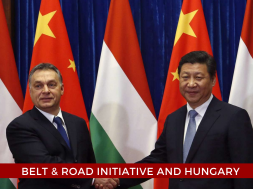
Social cohesion plays a crucial role in the analysis of environmental, social, and governance (ESG) factors, as well as diversity, equity, and inclusion (DEI) frameworks. In today’s landscape, investors, local and national governments, and civil society stakeholders are giving considerable attention to issues related to the social component. To ensure the establishment of sustainable, inclusive, and peaceful societies, it is imperative to implement policies and frameworks that actively promote social cohesion.
I was delighted to be invited to join the Social Cohesion Cohort of the American Council on Germany to discuss the social component and have insightful meetings with several stakeholders in both Germany and the US. My key takeaways from the first phase of our cohort’s exchanges are published on my previous blog titled ‘How to Ensure Social Cohesion?’. In this blog, I will be sharing my observations and analysis that evolved from discussions with government officials, NGO representatives, project leaders, local organizations, and change-makers who are working towards building more inclusive communities.
Here are my main takeaway messages:
- The world is grappling with a surge of populism. Countries such as the US, the UK, Italy, France, the Netherlands, Brazil, Hungary, Poland, and Turkey are the latest examples where populist movements have garnered attention in recent years. The ascent of political figures like Marine Le Pen, Viktor Orbán, Geert Wilders, and Donald Trump continues to be a prevailing trend. Most often, populist movements and figures assert that they are the sole representatives of the public. Their go-to move? Breaking down complicated issues with some straightforward talk, usually pointing fingers at immigrant communities lately. When these populist leaders gain traction, it’s often because they’re good at making problems sound easy for everyone to understand. But let’s be honest, their simple explanations don’t always make a lot of sense, and they are not trying to be rationale in their reasoning. As Ralf Dahrendorf once said, “Populism is simple, democracy is complex”.
- Antisemitic, anti-Muslim, and other forms of religious intolerance and hate crimes are on the rise.
- Local communities and NGOs have the power to drive impactful change. Whether it’s a sports club organizing after-school programs or a community support group offering guidance to immigrant men and women on issues like immigration and legal services, these organizations are at the heart of our societies. Many communities are making significant strides toward creating more inclusive societies. However, despite the invaluable efforts that are creating concrete impacts on numerous individuals’ lives, they may not be sufficient to meet the growing demand.
- The representation of every element in society in the workforce is vital for inclusive and well-functioning societies. For local and national governments, state agencies, and private sector actors, the representation of diversity in the workforce and decision-making mechanisms is one of the key themes of interest that requires immediate attention and a solid strategy.
- To understand nations, countries, and individuals, the education of history plays a crucial role. Efforts to delete syllabus references on topics such as slavery and discrimination do not contribute to an integrated society. Although some topics are painful to talk about and create uncomfortable feelings, it is important to recognize past bad practices to avoid any behaviors that may divert society from the idea of cohesion.
In conclusion, I will reiterate what I mentioned in my first blog, which I believe is the most important key factor when we talk about social cohesion: Social cohesion is centered around active listening and engaging with people in a way that fosters genuine communication. It also involves taking action, being prepared to change the status quo, and striving for better communities where everyone feels included and has a sense of belonging.
In this instance, I would like to draw attention to one important principle: honesty. To ensure inclusive societies, we should first be honest about facts and the status quo. Therefore, I suggest that every individual should consider asking themselves some questions. When I study the social component, I try to challenge myself with these questions:
- What are my unconscious biases that may be influenced by the anchoring effect and affinity bias?
- Who are the individuals I want to spend the most time with, and why is that the case? Who do I spend the least time with, and what is the outcome of my reflection to understand why?
- Am I actively advocating for more diversity, either in private spheres or in the business environment?
I believe it is important to conduct a self-audit on issues around the social component before making bold statements. It is essential to think about these questions and reflect on them. Moreover, it is important to note that diversity drives performance and resilience through innovation and better decision-making.
Museums to visit:
- National Museum of African American History and Culture, Washington D.C., the United States
- Freedom House Museum, Alexandria, Virginia, the United States
- The Black Heritage Museum, Arlington, Virginia, the United States
#cohesioncrew










